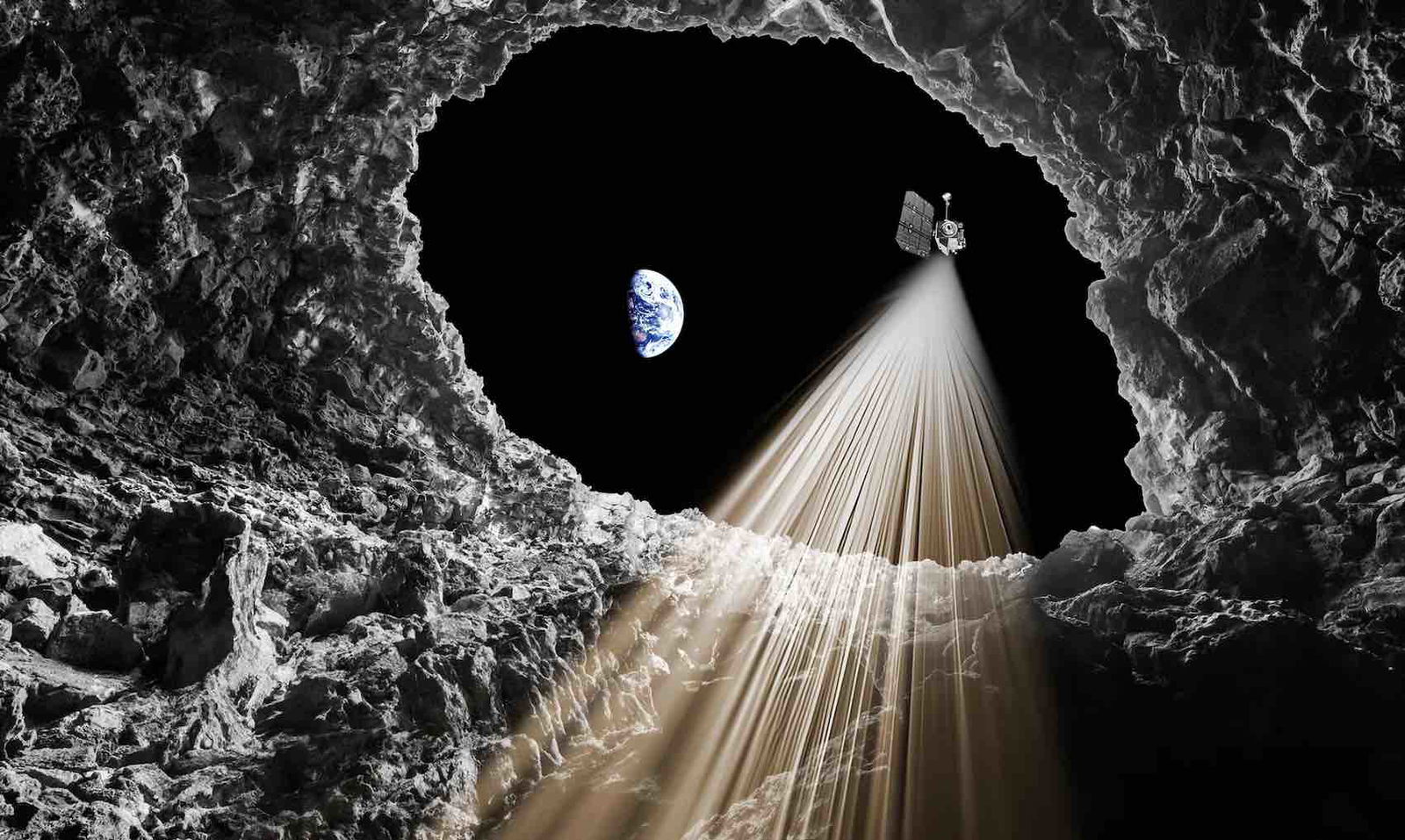
Welcome to this installment of The Intelligence Brief… This week, a groundbreaking new study using NASA’s Lunar Reconnaissance Orbiter has identified over a dozen newly confirmed pit craters on the Moon that could serve as natural entrances to underground environments—some of which may be ideal for future astronaut shelters. In our analysis, we’ll explore 1) how these lunar pits differ from ordinary surface depressions, 2) why locations like Mare Tranquillitatis and Mare Ingenii stand out as particularly promising candidates, 3) how these formations could offer both scientific value and radiation-shielded environments for long-term habitation, and 4) why this discovery marks a pivotal step toward building lunar outposts using the Moon’s own geology.
Quote of the Week
“Pits would be useful in a support role for human activity on the lunar surface.”
– Robert Wagner, Arizona State University
RECENT NEWS from The Debrief
Windows into the Lunar Underground
The Moon and its mysterious surface have long fascinated us. From its massive craters to its expansive maria plains and mysterious “far side,” lunar features visible from Earth, as well as those discovered by past crewed missions and current satellite reconnaissance, continually add to the wonder we hold for Earth’s mysterious natural satellite.
Now, recent data collected by NASA’s Lunar Reconnaissance Orbiter (LRO) is providing high-resolution lunar imagery that scientists have used to help uncover potential gateways to hidden underground environments on the Moon.
The breakthrough discoveries, detailed in a recent study in the journal Icarus, identified more than a dozen new examples of mysterious lunar features known as “pit craters,” which may offer natural access points to subsurface lunar environments, and may even provide future shelter for astronauts, in addition to scientific treasures that have remained protected from the Moon’s harsh surface conditions.
Into the Pit
Pit craters are steep-walled, mostly circular depressions on the Moon that are formed when surface areas collapse into a subsurface void, sometimes because of the presence of lava tubes or caves in these areas.

Unlike simple depressions or collapse pits, which tend to collect light uniformly, true pit craters with subsurface access exhibit telltale shadows that behave differently over time. These shadows are visible in images collected by the LRO’s Narrow Angle Camera and suggest large overhangs or openings that exist beneath the surface.
In a recent study detailing these findings, nearly 15 years of combined imaging data from the LRO were subjected to refined image processing and shape-from-shading techniques. This allowed researchers to determine the existence of more than 100 pit craters, sixteen of which could be candidates for entrances into further subsurface lunar voids.
Natural Entrances to the Moon’s Underworld
“What we’re seeing are natural entrances, some with floors deep in shadow even at high Sun angles,” the researchers explain in their recent paper. Intriguingly, some of the most promising candidates from the research exist in well-known locations, which include the famous Mare Tranquillitatis, home of the first lunar landing base, and Mare Ingenii.

In addition to being well-characterized areas and even locations of past crewed visits, they are also compelling because their surrounding terrain consists of ancient volcanic plains. These make them ideal for forming and preserving lava tubes that the newly identified pit caves could provide access to.
Beyond Shelter: A Science and Safety Opportunity
Although the idea of exploring the lunar underworld is itself very intriguing, there are far more practical reasons that scientists want to study pit caves. Primarily, their value is in their potential usefulness in long-duration missions.
Intact subsurface lava tubes, for instance, could offer shielding for astronauts, as well as sensitive scientific equipment, from radiation and other extreme environmental effects encountered during Moon missions. Such lunar cave environments also offer protection from micrometeorite impacts, which frequently impact the Moon after passing through its meager atmosphere.

Within these lava tube caves, astronauts would not only be protected from external dangers but would also find more stable temperatures, as well as an environment where undisturbed lunar material may exist, offering a pristine archive of the Moon’s geologic history.
“These environments could prove critical not only for scientific study but as infrastructure for human habitation,” the study notes.
Next Steps Toward Exploration
According to the study, the most promising pits in the current batch are those that possess consistent internal shadowing and favorable terrain. These, they argue, should be prioritized as potential landing or robotic exploration sites during future missions.
In the years ahead, initial exploration of these features could be undertaken with targeted scouting using future lunar orbiters and landers, which may be able to confirm whether these entrances do indeed lead to more extensive underground networks.
Offering the most detailed analysis of these mysterious features yet documented, the new study significantly expands our knowledge of lunar pit caves and marks a crucial first step toward transforming natural features on the Moon into functional outposts for future exploration.
That concludes this week’s installment of The Intelligence Brief. You can read past editions of our newsletter at our website, or if you found this installment online, don’t forget to subscribe and get future email editions from us here. Also, if you have a tip or other information you’d like to send along directly to me, you can email me at micah [@] thedebrief [dot] org, or reach me on X: @MicahHanks.

- Tsunami Waves Strike Pacific Nations After 8.8-Magnitude Russian Earthquake—Here’s What You Should Know
Several countries remain on tsunami alerts after a colossal magnitude 8.8 earthquake struck off Russia’s Kamchatka Peninsula late on Tuesday.
- U.S. Space Force’s Enigmatic X37-B Space Plane to Test Next Generation Lasers and Quantum Inertial Sensors
The U.S. Space Force is preparing to launch the enigmatic X37-B spaceplane to study next-generation lasers and quantum inertial sensors.
- “We Are Actually Very Close to This Science Fiction”: Meta-Optical Tech May Soon Enable ‘Projection-Glasses,’ Novel Cameras, and More
Australia’s ARC Centre of Excellence for Transformative Meta-Optical Systems is working to overcome the limitations of optical technologies.
- Kardashev Collapse? New Study Warns Alien Megastructures Could Destroy Themselves Before We Ever Find Them
A new study challenges whether alien megastructures, such as Dyson spheres, could last as durable signs of advanced civilizations.
- Cosmic Ray Discovery Suggests Extraterrestrial Life May Exist in “More Places Than We Ever Imagined”
Cosmic rays may be enough to nourish exterrestrial life residing underground in our solar system offering to broaden the search.
- Einstein Was Wrong? ‘Idealized’ Double-Slit Experiment Ends Nearly 100-Year-Old Debate
MIT scientist built an idealized, atomic-scale version of the famous double slit experiment which showed Albert Einstein was wrong.
- Meet Aeneas, the AI Archaeologist That Can Date and Decode Ancient Latin Inscriptions—But Don’t Fire Historians Yet
A new AI model, Aeneas, can not only estimate origins and dates for ancient Latin texts, but accurately restore lost words say developers.
- Experiments Show Mental “Time Travel” Trick Can Improve Recall and Restore Lost Memories
Experiments show mental “time travel” recreating the circumstances of the original memory can improve recall and restore lost memories
- 13,000 Years Ago, a Catastrophic Flood Scoured Oregon’s Ancient Landscape—New Satellite Images Reveal the Lasting Impact
Evidence of an ancient catastrophic flood that occurred 13,000 years ago has been revealed in new images obtained by the Landsat 8 satellite.
- A Radical New Theory Has Scientists Rethinking the Origins of the Universe
A radical new model of the universe redefines the first few moments of existence, reducing reliance on theoretical concepts.
- Scientists Decode “Perplexing Mystery” of How X-rays, Electric Fields, and Electron Avalanches Create Powerful Lightning Strikes
Penn State University scientists have demonstrated the complex series of events occurring inside thunderclouds that create lightning strikes.
- Baltic Sea Turns an Eerie Green as Ancient Organisms Invade Its Waters, New Satellite Images Reveal
Brilliant swirls of green are adding color to the waters of the Baltic Sea, as its summer waters are being overrun with microorganisms.
- ‘Extreme’ Chip Will Help LHC Scientists Explore Fundamental Questions About the Universe
Columbia University engineers invent an extreme chip capable of surviving the harsh radiation emitted during high-energy LHC experiments.
- “I’m Stunned and Flabbergasted”: Scientists Were “Blown Away” By a Rare Fossil Discovery Challenging Past Thinking on Pre-Dinosaur Evolution
A newly discovered prehistoric reptile, Mirasaura grauvogeli, was found to have unusual structures similar to feathers.
- Martian Gravity Surprise Offers NASA Clues to Why Its Robotic Rovers Are Getting Stuck
Scientists show a misunderstanding of gravity explains why successful Earth-based simulations that free trapped rovers fail on other planets
- A ‘Neurobiotic’ Sixth Sense? Scientists Find Microscopic Organisms Can Directly Communicate with the Human Brain
Scientists have revealed a potential ‘neurobiotic’ sixth sense derived from direct communication between microorganisms and the human brain.
- Cosmic Radiation Gifted ‘The Fantastic Four’ With Superpowers—But What Would It Do to a Person in Real Life?
What would happen to someone in real life if they were exposed to the same cosmic forces that gifted The Fantastic Four with superpowers?
- Scientists May Have Finally Solved the Origin Mystery of the Moon’s Exosphere
A new analysis of lunar exosphere origin theories has cast doubt on how much the high-energy solar wind really impacts its formation.
- Aliens, or Something Else? Astronomers Thought Life Might Exist on This Exoplanet—New James Webb Telescope Data Says Otherwise
Claims that extraterrestrial life may exist on the exoplanet K2-18b face new challenges from James Webb Space Telescope data.
- James Webb Space Telescope Sees ‘Zombie’ Black Holes Spring to Life, Feasting on Stars in Dramatic Tidal Disruption Events
Astronomers have made a series of first-of-their-kind observations that uncover the dusty remains of stars ripped apart by supermassive black holes.
- NASA’s “Hail Mary” Moment: Incredible Deep Space Surgery Saves JunoCam from Jupiter’s Fierce Radiation Fields
NASA successfully completed a rescue mission to save the JunoCam camera on the Juno spacecraft, only recently revealed.
- Extreme Plasmons Breakthrough Makes Gamma-Ray Lasers and Future Multiverse Probes “Very Probable”
Engineers invent a material with extreme plasmons that could aid sci fi technologies like gamma ray lasers and tools to probe the multiverse
- Are the ‘Seeds of Life’ Assembled in Space? A Stunning Discovery Says It’s Possible
This week, astronomers using the ALMA telescope have made a landmark discovery in the search for the cosmic “seeds of life.”
- “It was Literally Hiding in Plain Sight”: Fossil Forgotten in a Harvard Museum Reveals Secrets of Early Evolution
When a string of misidentifications ended, a fossil sat in a drawer at Harvard for a century until its significance was recently discovered.
- Lunar Landings Leave a Mark—Engineers Solve a Decades-Old Mystery, Enabling Safer Touchdowns on the Moon
Researchers have identified the phenomenon behind dust streaks from lunar landings, offering insights crucial for safely operating future Moon bases.
- Common Elements: Everyday Iron Oxide Could Replace Rare-Earth Metals for Future Gadgets
A new study could mark a shift in our dependence on rare earth metals to simple iron oxide for all our future devices and gadgets.
- Stonehenge Mystery: Enigmatic ‘Newall Boulder’ Wasn’t Moved by Glaciers After All—Its True Origins Are Even More Striking
A discovery from England’s famous Stonehenge has now been traced to a surprising source, which upends past thinking on its origins.
- Vera Rubin Observatory Unveils First High-Res Images of 3I/ATLAS—Captured Days Before Astronomers Knew It Existed
A mysterious new interstellar object, 3I/ATLAS, was discovered in July. It turns out that wasn’t the first time our telescopes spotted it.


